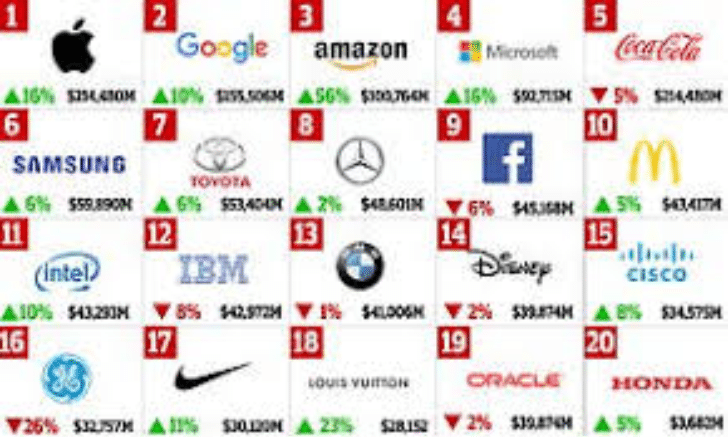Businesses use the annual run rate to project what will happen over a longer period based on data from a shorter period. This is used to demonstrate what a key performance metric, such as revenue or profits, would be for a year based on data from a month or quarter.
To calculate an annual run rate based on quarterly data, you have to use the annual run rate formula or the annual run rate calculator. But how do you go about this?
This article will provide all the information you need to get started.
How Do You Figure Out The Annual Run Rate?
Once you have a few months of revenue data, calculating the run rate is fairly simple.
You can use the annual run rate calculator or the annual run rate formula to calculate the run rate. The annual run rate formula divides your current revenue by a specific period. Divide that figure by 12 to get a year’s worth of income.
For instance, if you earned $15,000 per month, your annual run rate would be $15,000 x 12, or $180,000.
What Is The Average Speed In Annual Run Rate?
Revenue run rate (also known as annual run rate or sales run rate) is a method of forecasting future revenue over a more extended period (typically one year). You can do this by using previously earned income. For example, if your company made $15,000 in sales in the previous quarter, your annual run rate is $60,000.
Run rate assumes that sales will stay the same and uses that information to predict the future performance of a company’s annualized recurring revenue. The run rate looks at current data to determine how your company’s future performance will affect its finances.
The annual run rate calculator or the annual run rate formula can be used to look at our current data. To determine how much you make in a year, divide your quarterly or annual income by 4 or 12. Your company’s current ability to make money is used in the calculation to get a better idea of its long-term value.
Of course, this simplistic approach assumes nothing will change in the coming year. Churn, revenue expansion, upsells, and changes in growth rate are all conveniently excluded. This means that the run rate isn’t always accurate, but it helps predict future growth and compare the size of your company to others.
For example, a SaaS founder may claim to have a $5 million business; this is most likely based on their expected annual revenue of $5M.
Annual Run Rate Vs. Annual Recurring Revenue, Are They Similar?
Annual recurring revenue is a success metric that shows how much money a subscription or contract generates yearly. Because many contracts or subscriptions are issued annually, this is the most reliable indicator of financial health for many businesses, including software as a service (SAAS) providers.
But some businesses, like restaurants and stores, use shorter-term subscriptions or depend completely on month-to-month income. In some cases, the company is new and must make assumptions about future growth based on limited data.
A run rate may be used in these cases.
The yearly run rate formula is used to extrapolate data from a certain amount of time and turn it into an annual rate. A new restaurant, for example, that earns $3,000 in January and February may be able to assume an ARR of $36,000 ($3,000 per month multiplied by twelve months).
But when figuring out the annual run rate, it’s essential to use a time frame that shows how the business is doing. Failure to do so could lead to incorrect data and poor financial decisions.
When people talk about annual run rate vs. recurring revenue, we can say they are not similar, but they do have some slight similarities when used.
When Is A Business’s Run Rate Useful?
Despite their flaws, run rates can be helpful in certain situations. This includes:
Starting a new business
Run rates can be a helpful indicator of financial performance for companies that have been in operation for a short time. Because the run rate can be calculated with data from only a few weeks or months, executives, investors, and venture capitalists can get a pretty good idea of how the company will do.
They can obtain this data even if the company has only been in operation for a short time. For early-stage startups, the run rate can be a useful metric, especially if the economic environment around the company isn’t expected to change much.
Restructuring a current company
Launching new products or services, reorganizing existing ones, or starting projects to cut costs can have a big effect on how well a company does.
Run rates give a consistent benchmark that can be used to see if the changes have improved the company’s financial performance. If your run rate improves after making changes, that’s great; if not, it’s time to start over by applying the annual run rate formula or using the annual run rate calculator.
Reporting in general
Run rate is useful for more than just building your pitch deck. Regardless of their stage of development, many startups continue to track and report on run rates. Run rate is a simple metric to deconstruct.
For example, sales reps can easily track their run rate, making it simple to set KPIs. However, don’t base future budgets on your run rate because you might end up overspending if your estimates are off.
Measure run rates with caution and the appropriate tools
Your run rate is an essential metric for tracking the performance of your subscription business, especially if you’ve only been in operation for a short time. It’s a quick and easy way to get a benchmark on your revenue, but it’s also an easy metric to abuse and miscalculate, sometimes with disastrous results. Choosing the right forecasting tools is a necessity, not a luxury.
What Are The Advantages Of Calculating Run Rate?
Using run-rate revenue, you can extrapolate your available data to predict future revenue performance. Financial forecasting is beneficial to new businesses, growing businesses, and businesses with recurring revenue.
On the other hand, as a financial performance indicator for your company, it provides the following advantages:
Earnings Projections
Run rate calculations are a quick and easy way to figure out how well your business is doing financially now and in the future, assuming sales keep going the way they are.
Forecast Future Growth
When you know your company’s annual revenue run rate, you can predict how much cash you will need in the future.
Estimate Future Savings
The revenue run rate can be used to forecast how well you expect to perform in the following year. For example, you can calculate how much money you will save and whether you can make capital improvements or purchase new manufacturing equipment.
Make Sound Financial Decisions
Understanding your revenue run rate allows you to budget appropriately. For example, if your revenue growth projections fall short of previous years, you can find ways to reduce expenses while increasing sales.
Inventory Control
Accurate run rate calculations can help you better manage your inventory by keeping you from overstocking or running out of goods every other month.
Sets a Standard for your Company
The revenue run rate benchmark can be used to track your company’s progress and compare it to SaaS averages.
What Are The Dangers of Using Run Rate?
It’s easy to overestimate run rates, and companies can use run rate numbers to make their performance appear better than it is. Though, a good management team would never do this.
In addition, a company’s calculated run rate can be misleading in other ways. Most businesses have seasonality, meaning their performance naturally goes up and down with the seasons.
Because sales in the retail industry typically peak during the holiday season, the fourth-quarter performance is usually the best. Some retailers make most or all of their profits in the fourth quarter.
Conclusion
Annual run rates are a simple metric for assessing the health of a business process. Ideal run rates can be used to determine whether meeting a target run rate is feasible. Actual run rates can be compared to the target rate to see if any inefficiencies need to be addressed to meet current targets.
Keep in mind, however, that anomalies in recent data will limit the accuracy of future projections based on that data.
Frequently Asked Questions
How do I make annual projections using data from the current quarter?
Forward projections of performance over a year can be calculated by multiplying current quarter run rates by 4.
When are calculated run rates in error?
Run rates can be wrong if the current data conditions don’t match up with what’s expected to happen in the future. One-time sales, for example, can inflate current-quarter data and reduce the utility of any projections made with it.
When are run rates the most useful?
Based on current data, run rates are excellent predictive tools for predicting future performance. This can help determine the possible annual benefits of a process-improvement measure just put in place a month ago.
What is the average annual run rate?
Based on monthly or quarterly data, the annual run rate estimates how much money a company will make in a year. The annual run rate can be used to forecast the future of any business, calculate the annual burn rate, and plan for future demand.
Future forecasting and annual burn rate calculations can help you determine how much inventory to keep on hand and how many sales representatives to hire for your SaaS Company.
What is the distinction between run rate and burn rate?
Using the available information, run rate estimates a company’s annual revenue, while burn rate measures how much money the company is losing. It does this by figuring out how much of a new company’s risk capital is used to pay for overhead costs before it starts making operating profits.
What exactly is run rate EBITDA?
The run-rate analysis is very subjective, so you should include a disclaimer when you do run-rate calculations in your M&A reports. In some of your M&A reports, you may request that the buyer make a bid based on the EBITDA run rate rather than the adjusted EBITDA figure based on actual results.
This happens when the adjusted EBITDA does not include the value of new customer contracts for an entire year.
Related Articles
- Business Plan Financial Projections: All you should know.
- WHAT IS ANNUAL NET INCOME: Definition, Rate, And Calculator
- Simple Business Plan Example [500+ With Free Guide]
- GROSS ANNUAL INCOME: Definition & How To Calculate It
- Advantages of Moving Traditional Business to Online Business
Reference
- fool.com – What Is Run Rate?
- isixsigma.com – Run rate






